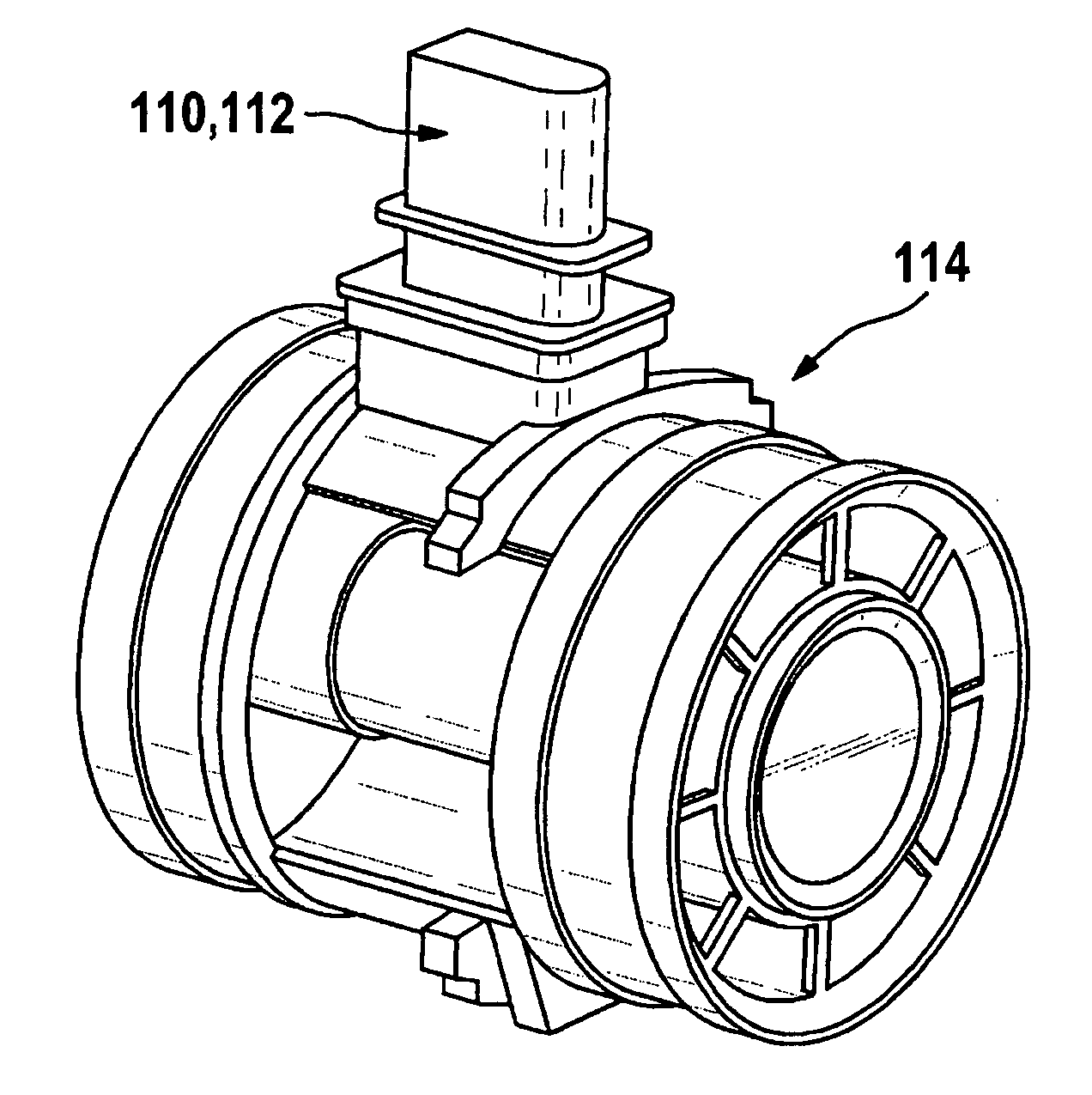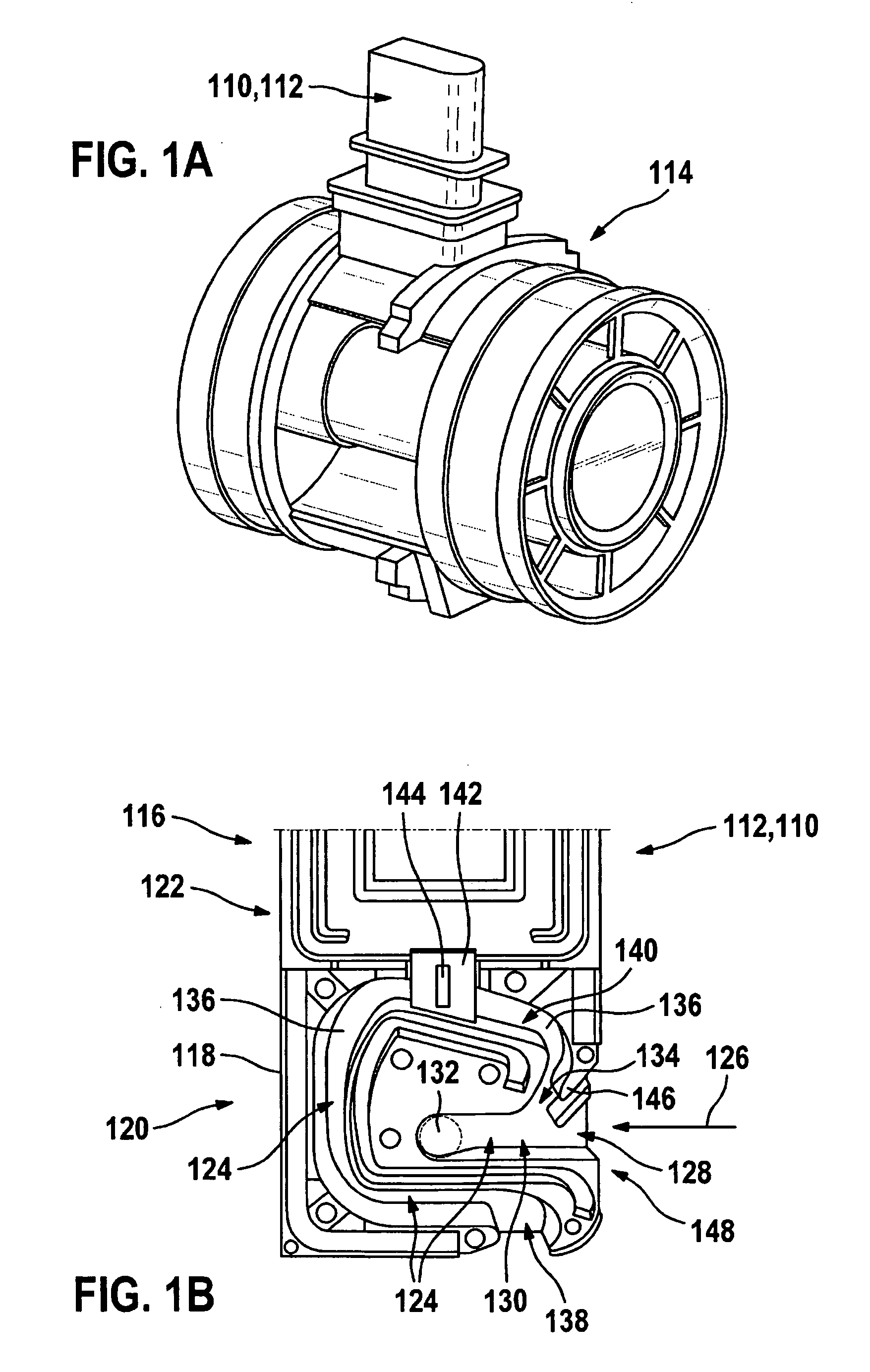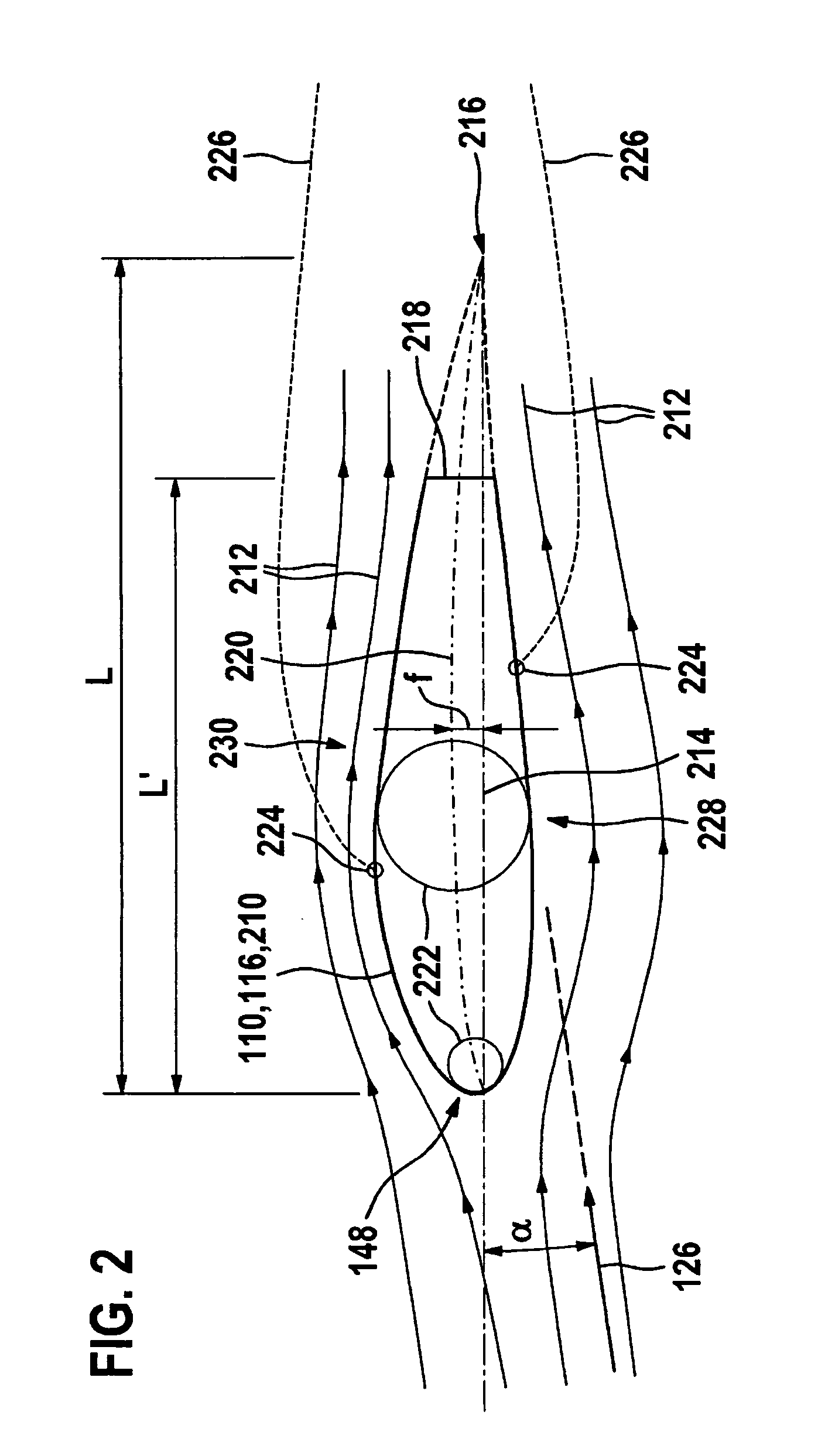Plug-in sensor having an optimized flow outlet
a plug-in sensor and flow outlet technology, which is applied in the direction of engine testing, structural/machine measurement, instruments, etc., can solve the problems of contaminating the sensor element, affecting the flow rate of the plug-in sensor, and affecting the flow rate of the sensor, so as to maximize the flow rate of the flowing fluid medium, reduce the magnitude of the detachment area on the plug-in part, and stabilize the flow conditions
- Summary
- Abstract
- Description
- Claims
- Application Information
AI Technical Summary
Benefits of technology
Problems solved by technology
Method used
Image
Examples
Embodiment Construction
[0039]FIG. 1A shows an exemplary embodiment of a conventional plug-in sensor 110, which, in this case, is developed as a hot film air mass meter 112. Hot film air mass meter 112 is inserted into an intake tract 114 of an internal combustion engine, which is not shown in FIG. 1A. Such hot film air mass meters 112 are commercially available. Hot film air mass meter 112 is designed to detect the flow direction of an intake flow and is designed to record the load in internal combustion engines, using gasoline or Diesel fuel injection. The installation of hot film air mass meter 112 is usually made between an air filter and a throttling device, and it is usually installed as a preassembled assembly. Accordingly, plug-in sensor 110 has a plug part 116, which is shown in FIG. 1B in an opened state in a side view, and which projects in FIG. 1A into intake tract 114. It may be seen in FIG. 1B that, in this exemplary embodiment of hot film air mass meter 112, a measuring housing 118 of hot fi...
PUM
 Login to View More
Login to View More Abstract
Description
Claims
Application Information
 Login to View More
Login to View More - R&D
- Intellectual Property
- Life Sciences
- Materials
- Tech Scout
- Unparalleled Data Quality
- Higher Quality Content
- 60% Fewer Hallucinations
Browse by: Latest US Patents, China's latest patents, Technical Efficacy Thesaurus, Application Domain, Technology Topic, Popular Technical Reports.
© 2025 PatSnap. All rights reserved.Legal|Privacy policy|Modern Slavery Act Transparency Statement|Sitemap|About US| Contact US: help@patsnap.com



